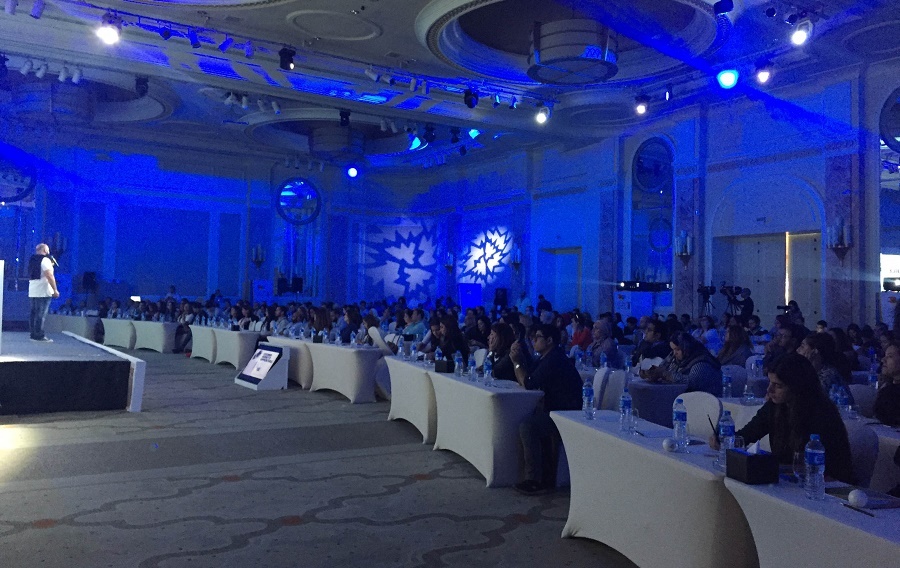Can new tech trends advance digital advertising?

'Why did Mandolin create a two-bar pack?’ Mandolin Egypt itself did not know the answer but used the question in its social media advertising before launching its comeback product: the two-bar pack.
Mandolin chocolate, a subsidiary of the international FMCG company Mondelez, has been away from the Egyptian shelves for many years after being gradually replaced with a more competitive two-bar product, Twix. Their relaunch campaign was low-budget, so Mandolin used digital platforms as the basis for the campaign.
Sara Metwally, head of media agency Starcom Egypt and one of the masterminds behind the Mandolin relaunch, said the campaign drew more than 4.5 million views on Facebook and Youtube and the product sold out before it ended.
Launched in late June during Ramadan, the campaign sent a question to its fan base asking why they thought Mandolin created a two-bar pack, and each answer received was filmed and aired on social media in a sarcastic way.
“We had a budget squeeze and did not really have a sexy selling proposition [for] why we are launching the two-bar pack,” Metwally said during the third Digital Media Forum (DMF) held in Cairo on Wednesday.
Using digital tools and trends to take a small product, especially one like Mandolin that was out of production for years, and expand it into a bigger brand is an industry trend today.
Rapid changes in the ways consumers behave towards products, content and services has made it inevitable that businesses will start capitalizing on digital and technological tools. However, the metrics of success are still experimental.

(Image via Mandolin Facebook)
Choose your metrics wisely
Dozens of digital media organisations, experts and researchers from Egypt, MENA and the UK, were brought together at DMF to discuss digital trends in 2016 and how they were affecting business.
Panelists who represented international organisations agreed that narrowing down your target audience and early experimentation are keys to any kind of digital advertising strategy.
“If you have millions of pounds to spend on a campaign, no room for errors, you have to drive efficiency, making sure this is delivering on your business,” Metwally said.
She said metrics such as viewership, engagement, and insights were valuable assets for campaign success. “In digital, you don’t need to wonder if your campaign is seen or is making a difference, you have all that data in real time.”
Further, no online interactions take place in technology silos.
"When a group of people are watching TV probably they're also connected to their phones and having a conversation about what they are watching. Similarly if a consumer is commuting, listening to the radio and also connected to their phones at the same time,” Metwally said.
Measuring bang for your buck
Return on investment (ROI) strategies should not be measured in-silos either.
Sara Farouk, digital media director at Tarek Nour Communications, told Wamda that in practice the best approach to boosting online monetization was getting to know your audience and optimising interactions across different mediums.
She said quantitative metrics such as the number of views and total reach were still valid but would increase the better you know who you are targeting. Technology helped a lot in that.
Out with the old
Technological disruption has for the first time rapidly shaken up business models that depend on conventional advertising strategies such as television and other traditional media outlets.
Technology is now pivoting around wearables. In 2015 Google shipped more than five million virtual reality cardboard goggles and logged more than 350,000 hours spent on Youtube watching virtual reality videos.
By 2020, customers will manage 85 percent of their relationships with an enterprise without interacting with a human, thanks to algorithms. In March, KLM Royal Dutch airlines started giving passengers the option to receive their boarding passes through Facebook messenger and follow up with their flight updates there.
Making those trends useful for your business is challenge. "This depends on your objective," James Whatley, planning partner and innovation at the UK based Ogilvy and Mather told Wamda. “For example, if you’ve got a problem where lots of customers have the same issue you can create a chatbot to help deal with that issue."
Early experimentation was one way to implement this, Whatley said.
“Video is already old, everyone knows about it, but live videos, for example, are interesting and simple to build.”
On the other hand, head of digital science at Choueiri Group Youmna Borghol believes economic hardships can affect everything, whether you are doing digital or conventional advertising.
“The shift should not be in the medium only, 50-60 percent of the digital spends for brands are shifting to audience targeting,” she said. “What we try to focus on today is the value of the product not just the tool.”
Feature image via Menan Khater.


